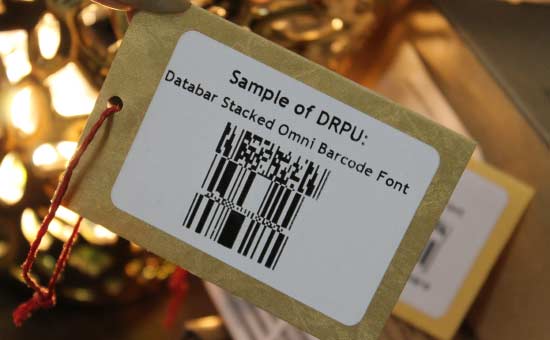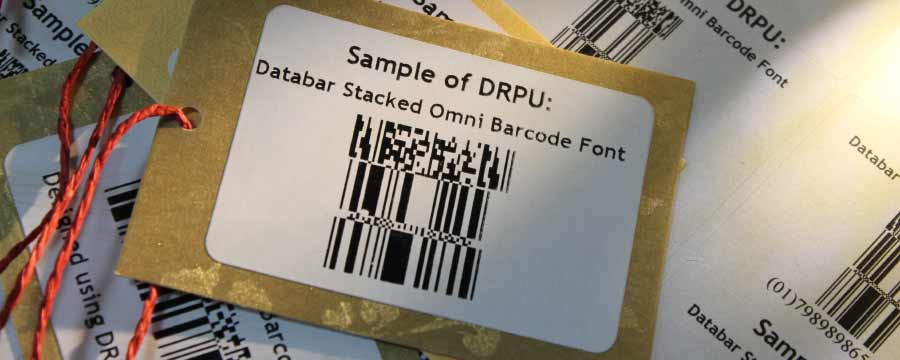The Databar Stacked Omni barcode consists of two stacked rows of bars, with a smaller row of bars located between them. The smaller row of bars serves as a separator, allowing the barcode to be divided into two halves for easy scanning. The barcode is also designed to be compact, with a maximum size of 39 modules, or approximately 1.2 inches in width.
The Databar Stacked Omni barcode can encode a range of product information, including the product's GTIN (Global Trade Item Number), the manufacturer's code, the product's weight or dimensions, and other relevant information. This makes it a useful tool for inventory management, supply chain management, and other applications where accurate and efficient tracking of products is important.
In addition to its compact size and Omni directional scanning capabilities, the Databar Stacked Omni barcode also offers other advantages over traditional barcodes. For example, it can be read by standard barcode scanners, making it easy to integrate into existing systems. It also offers a high level of data security, as the encoded data can be verified and authenticated using advanced algorithms.
Overall, the Databar Stacked Omni barcode is a powerful tool for managing and tracking products, offering a range of features and benefits that make it ideal for use in a variety of industries and applications.
-
Databar Code 128 Barcode
Author: Technogeek | Date: 27/05/2023
-
Introduction of Databar
Barcode
Author: Tech Solution | Date: 26/05/2023
-
Databar Code 128 Set A
Barcode
Author: Teachable Tech | Date: 26/05/2023
-
Databar Code 128 Set B
Barcode
Author: Digital Deeper | Date: 25/05/2023
-
DataBar Limited Barcode
Author: Tech Solution | Date: 25/05/2023
Databar Stacked Omni Barcode Different from Other Barcode Types
A Databar Stacked Omni barcode is a unique type of barcode that differs from other barcode types in several ways. In this section, we will discuss the differences between the Databar Stacked Omni barcode and other popular barcode types.
-
Size and Shape
One of the primary differences between the Databar Stacked Omni barcode and other barcode types is its size and shape. The Databar Stacked Omni barcode is a 2D barcode that is designed to be compact, with a maximum size of 39 modules. This makes it ideal for use on small products to fit the barcode on it and also clear to scan or in situations where space is limited. In contrast, traditional 1D barcodes such as UPC and EAN codes are longer and narrower, making them less suitable for small products.
-
Encoding Capacity
Another difference between the Databar Stacked Omni barcode and other barcode types is its encoding capacity. The Databar Stacked Omni barcode can encode a range of product information, including the product's GTIN, the manufacturer's code, the product's weight or dimensions, and other relevant information. This makes it a powerful tool for inventory management and supply chain management. In contrast, traditional 1D barcodes are typically limited to encoding only a small amount of information.
-
Scanning Capabilities
The Databar Stacked Omni barcode is also different from other barcode types in its scanning capabilities. The barcode is designed to be Omni directional, meaning it can be read from any angle. This makes it ideal for products that need to be scanned quickly and accurately. In contrast, traditional 1D barcodes can only be read in one direction, making them less efficient in situations where scanning speed is important.
-
Data Security
The Databar Stacked Omni barcode also offers a higher level of data security than traditional barcode types. The encoded data in the barcode can be verified and authenticated using advanced algorithms, providing an extra layer of protection against fraud and counterfeiting. In contrast, traditional 1D barcodes offer limited security features, making them more vulnerable to tampering.
-
Compatibility
Finally, the Databar Stacked Omni barcode is compatible with standard barcode scanners, making it easy to integrate into existing systems. This means that businesses can adopt the barcode without having to invest in new scanning technology. In contrast, some other 2D barcode types may require specialized scanning equipment, making them more costly and difficult to implement.
In summary, the Databar Stacked Omni barcode differs from other barcode types in its compact size, high encoding capacity, omnidirectional scanning capabilities, data security features, and compatibility with standard scanning equipment. These differences make it a powerful tool for managing and tracking products in a range of industries and applications.
Databar Stacked Omni Barcode Read and Decode
A Databar Stacked Omni barcode is a type of 2D barcode that is designed to encode a range of product information, including the Global Trade Item Number (GTIN), serial number, expiration date, weight, dimensions, and other relevant information. In order to read and decode a Databar Stacked Omni barcode, specialized barcode scanners and software are required.
➜ Here is a detailed explanation of how a Databar Stacked Omni barcode is read and decoded:
-
Scanning the Barcode
The first step in reading a Databar Stacked Omni barcode is to use a barcode scanner to scan the barcode. There are a range of barcode scanners available, including handheld scanners, fixed scanners, and mobile devices with built-in scanners. The scanner uses a laser or camera to scan the barcode and capture an image of the code.
-
Decoding the Barcode
Once the barcode has been scanned and the image captured, specialized software is used to decode the barcode and extract the information encoded within it. This software is typically installed on the device being used to scan the barcode, such as a handheld scanner or mobile device.
The software uses complex algorithms to analyze the barcode image and decode the information encoded within it. The software first identifies the type of barcode being scanned, in this case a Databar Stacked Omni barcode, and then uses the information encoded within the barcode to extract the relevant data.
-
Extracting the Data
Once the barcode has been decoded, the software extracts the data encoded within the barcode and presents it in a readable format. The extracted data may include the GTIN, serial number, expiration date, weight, dimensions, and other relevant information.
-
Integrating with Inventory Management Systems
Finally, the extracted data is typically integrated with an inventory management system, such as a point-of-sale system or warehouse management system. This enables retailers and other businesses to manage their inventory more efficiently and accurately by tracking stock levels, managing expiration dates, and ensuring that the correct products are being sold.
Summary: A Databar Stacked Omni barcode is read and decoded using specialized barcode scanners and software. The barcode is scanned using a laser or camera, and the software uses complex algorithms to analyze the barcode image and extract the data encoded within it. The extracted data is then integrated with inventory management systems to enable businesses to manage their inventory more efficiently and accurately.

